A home is a dream for most of us. We decorate our home in many ways. One of the ways is painting our home with our creativity and choice. Painting is usually done on the plastered surface by the following steps1. If the plaster quality is not good enough it can cause many problems later.
Plaster is a common material used in construction all around the world. Easy to work with and also easier to repair. However, there will be times when your plaster starts to show signs of wear and tear or other problems.
Understanding what type of problems can occur and its causes, you can resolve them before they become bigger issues. Today we will walk you through several common plaster defects and their primary causes & prevention.
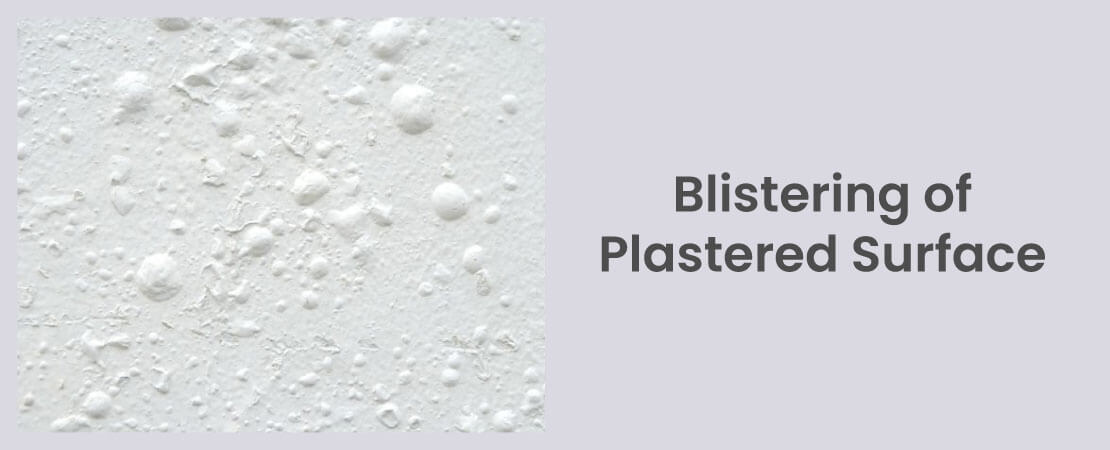
1. Blistering of Plastered Surface
Blistering is the formation of small patches of plaster, swelling out beyond the plastered surface, arising due to late slaking (addition of water to lime) of lime particles in the plaster. This defect is usually caused due to the uneven mixing of plaster.
How to prevent it: This can be prevented by ensuring appropriate mixing between cement and it’s components used to form plaster.

2. Plaster De-bonding
De-bonding occurs when a plaster is separated from the wall. It can be caused by an excessively thick plaster layer, inadequate substrate preparation or may be due to a dusty, oily or dry substrate.
How to prevent it: To prevent de-bonding of plaster, we need to take care of the following things during plastering.
- Remove dust & oil from the substrate before plastering.
- Allow substrate to reach correct moisture content.
- If necessary you should use bonding chemical.
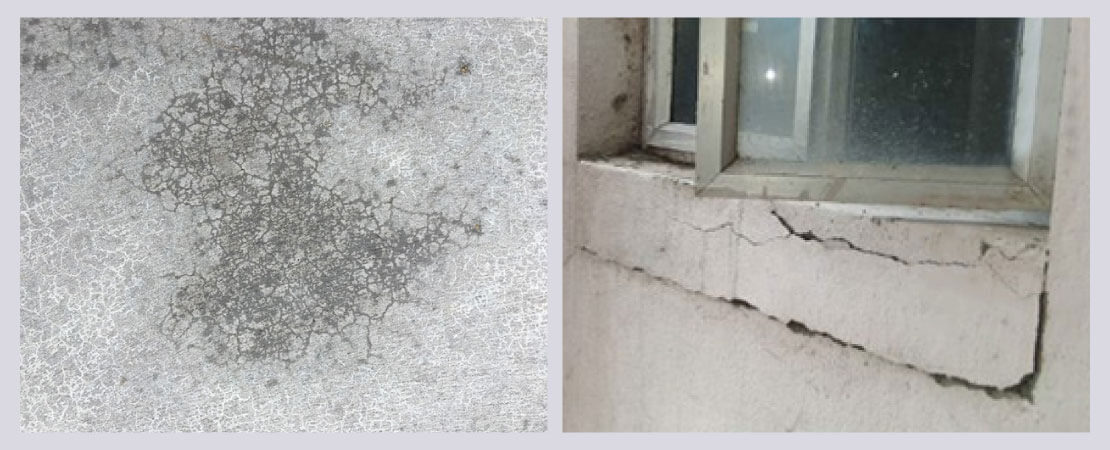
3. Cracks on Plastered Surface
One of the most common problems you would have observed in plastering is the crack. Cracks on the plastered surface can be in different forms:
- Crazing – It is a network of fine cracks like spider web. They are usually very fine and do not extend through the whole depth of the plaster. It occurs due to presence of excess fine content in the sand or due to dry base on which plaster is applied – when base absorbs the water and fines accumulate on the surface, it leads to crazing.
- Separation crack at joints – It usually occurs at joints of two different materials for example at junction of RCC & Brick work. It occurs due to differential thermal movement.
- Crack with Hollowness – This crack occurs due to hollowness in plaster. Other reasons could be extra water in the plaster mix or due to poor workmanship.
How to prevent it: Mainly cracks occur due to bad workmanship or expansion and shrinkage in the plaster during drying. Below are few tips to prevent cracks:
- Ensure the addition of water in mortar done is by skilled mason and not by unskilled labour to ensure desired workability in terms of handling and application.
- It can be avoided by proper curing of the plaster in order to slow down any rapid drying.
Taking care of workmanship and material quality issues will help in preventing cracks.
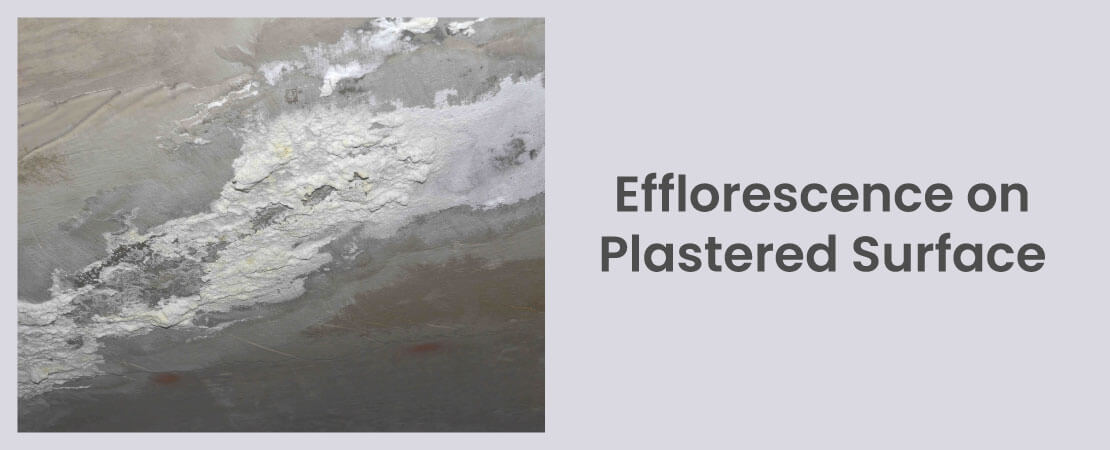
4. Efflorescence on Plastered Surface
When a newly constructed wall dries out, the soluble salts are brought to the surface and they appear in the form of a whitish crystalline substance. This is called efflorescence. Efflorescence is formed on plasters when soluble salts are present in plaster making materials as well as building materials such as bricks, sand, cement etc. Even water used in the construction work may contain soluble salts. It seriously affects the adhesion of paint with the wall surface and causes further problems.
How to prevent it:
- All Construction materials used for wall should be free from salt.
- Ensuring that the surface is moisture-free.
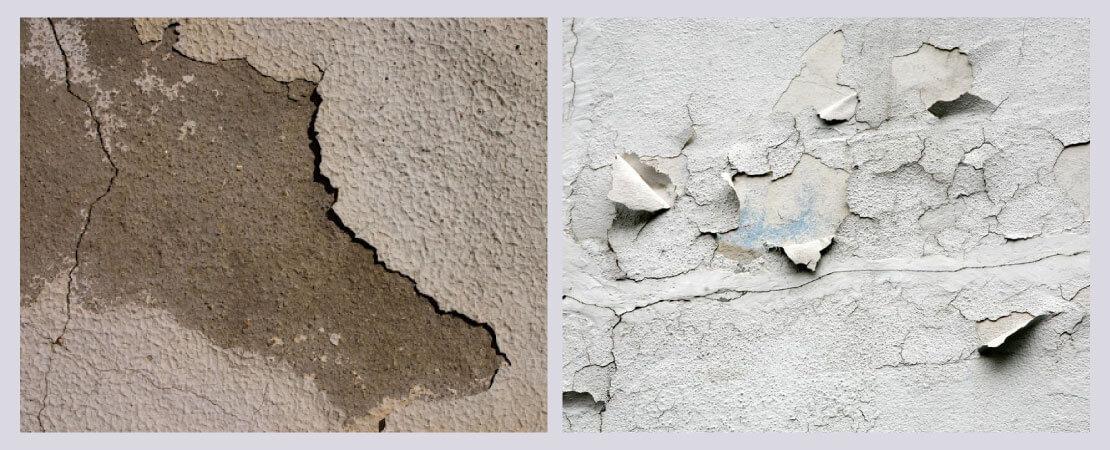
5. Falling Out of Plaster
This defect can happen in two forms – Flaking of plaster and peeling off plaster.
Flaking of plaster: The formation of a small loose mass on the plastered surface is known as flaking. It is mainly due to bond failure between successive coats of plaster.
Peeling off plaster: The plaster from some portion of the surface comes off and a patch is formed. This is termed as peeling. It is also mainly due to bond failure between successive coats of plaster.
How to prevent it: Both defects can be prevented with proper material selection and surface preparation. Imperfect adhesion can be minimized by good workmanship.
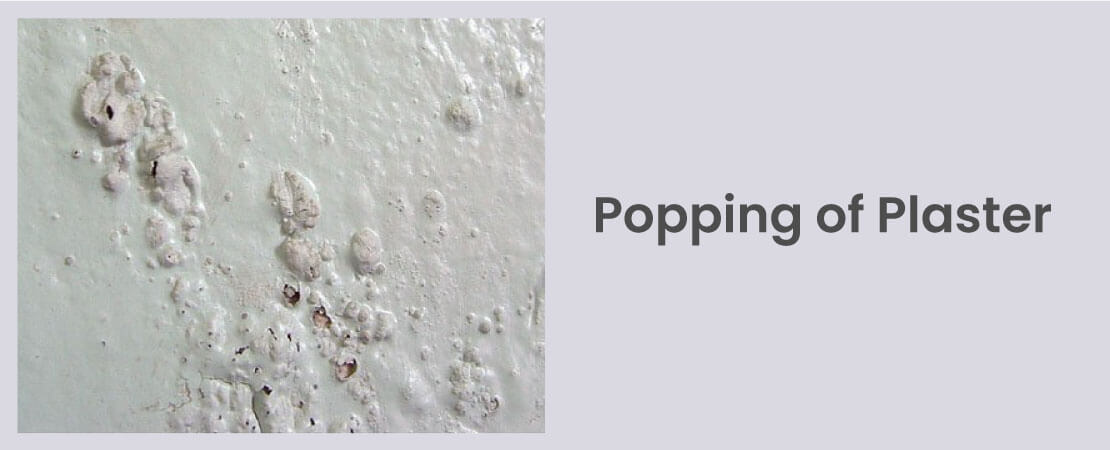
6. Popping of Plaster
Popping is the formations of conical like holes that break out of the plaster. It is caused due to the presence of contaminant particles such as burnt lime or other organic materials in the mix of mortar.
How to prevent it: To prevent popping in plastering, you need to ensure that no contaminant particles are present in the mortar mix.
7. Loose Plaster
When the plaster gets displaced on external impacts like application of material or tapping, etc, it is termed as loose plaster. This is caused mainly due to improper mixture and inadequate curing.
How to prevent it: It can be prevented with the use of proper mixture and adequate curing. Good workmanship will help in avoiding this problem.
Apart from the above defects, Uneven or undulation also occurs at plastered surface. The plastered surface should be in perfect plumb and without any undulations. Unevenly plastered surface happens due to poor workmanship2 of the plastering work.
After knowing the defects, read some precautions to be taken while plastering:
- The areas that need to be plastered should be washed and kept wet.
- All loose material sticking to the masonry should be removed before plastering.
- The joints should be cleaned by brushing or scrapping with wire brushes.
- The uniform level is tested with plumb-bob before & after applying the plaster.
- Specified cement, sand ratio should be used while making cement mortar.
- Ensure proper bonding between the surface of masonry and plaster.
Apart from these precautions, Skilled workers and good quality material should be used to minimise the defects3.
Conclusion
Plastering not only makes the surfaces smooth but gives a good finishing to the walls, ceiling and other parts of building. It is an important part of construction. To ensure good quality of plaster, it is important to know about the defects in plastering. Our objective of this content was to create awareness about various defects in plastering and its prevention. We hope this information will be helpful for you. And if you want a professional advice, then you can contact home inspection services who can inspect your property. Opting this service will give you information about issues and long term solutions for all types of defects in your home/property.

